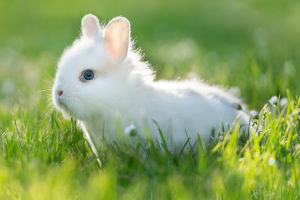Dragonflies, belonging to the class Insecta and order Odonata, are widely recognized as exquisite and graceful insects that are commonly found in aquatic environments worldwide, including lakes, rivers, and wetlands.
The body of a dragonfly is typically elongated and slender, consisting of three parts: the head, thorax, and abdomen. They possess two pairs of transparent and glossy wings, enabling them to fly swiftly and maneuver with agility.
Dragonflies boast remarkably large eyes, providing them with a 360-degree field of vision and making them exceptional predators.
As for their diet, dragonflies primarily feed on insects and other small invertebrates such as mosquitoes, flies, and tiny crustaceans. They engage in aerial hunting, employing their sharp jaws to capture prey while in flight.
Dragonflies exhibit exceptional speed, with certain species capable of reaching speeds up to 40 miles (64 kilometers) per hour.
The reproduction of dragonflies follows a unique and captivating process. Mating involves the formation of a "siamese flight" posture, during which the male transfers sperm to the female through specialized reproductive organs.
Subsequently, the female deposits her eggs in water, giving rise to larvae known as nymphs. These nymphs inhabit the water and sustain themselves by consuming other aquatic organisms.
Over time, they undergo several molting stages until they eventually crawl out of the water onto land, where they undergo their final molt, transforming into adult dragonflies.
Dragonflies possess significant symbolism within various cultures. In certain societies, they are regarded as symbols of good fortune, representing joy, change, and freedom.
Their captivating presence in nature has captivated the attention and curiosity of countless individuals, prompting extensive research.
Dragonflies constitute a captivating group of insects that have garnered widespread fascination due to their distinctive appearance, swift flight, and symbolic importance. They offer a glimpse into the diversity and beauty of life as an integral part of the natural world.
Differentiating between dragonflies and damselflies can be accomplished by considering the following characteristic distinctions:
1. Body shape: Dragonflies typically possess a slender body with a long, thin abdomen and expansive wings. In contrast, damselflies exhibit a relatively shorter body with a flattened abdomen and comparatively smaller wings.
2. Eyes: Dragonflies exhibit large and prominent eyes that occupy a significant portion of their head. Damselflies, on the other hand, have relatively smaller and less prominent eyes compared to dragonflies.
3. Flight behavior: Dragonflies are renowned for their remarkable speed and agility, allowing them to swiftly change direction and altitude during flight. Damselflies, in contrast, tend to have a slower and more graceful flight pattern.
4. Resting position: When at rest, dragonflies typically position their wings horizontally, extending them to the sides. Damselflies fold their wings over their bodies while resting.
5. Habitat and behavior: Dragonflies are commonly found in aquatic environments such as lakes, rivers, and wetlands. They primarily prey on insects in the air.
Damselflies, on the other hand, prefer habitats near vegetation, particularly flowers and blades of grass, where they feed on nectar and small insects.
It's important to note that these distinctions may not apply universally to all dragonfly and damselfly species, as there are numerous variations and subspecies.
For more accurate identification and differentiation, detailed observation and understanding of specific insect characteristics and behaviors may be necessary.


